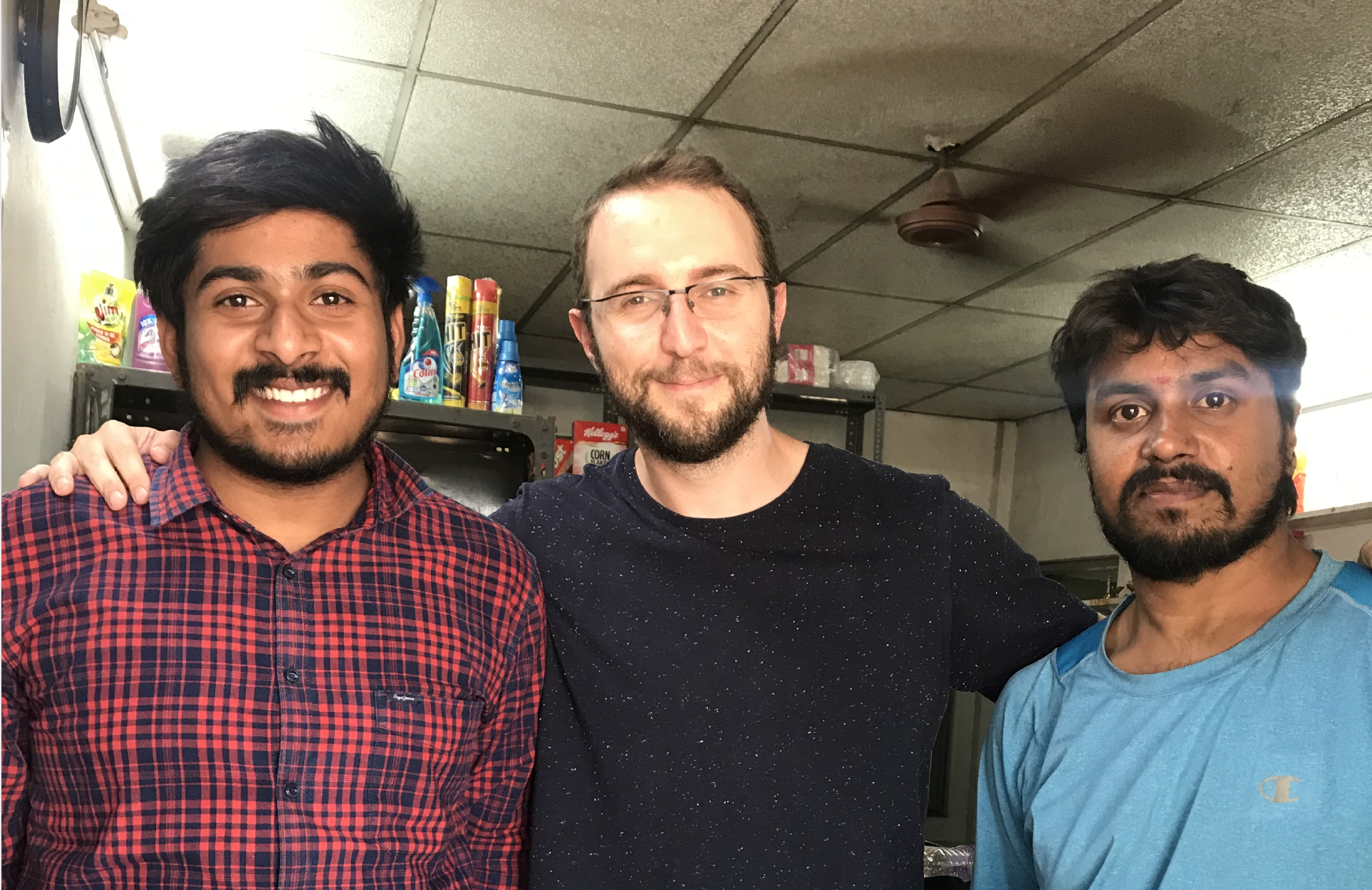Jay Zenkić: ‘The coconut was less hassle than the coins’
By Jay Zenkić
The rattle of loose change in your pocket is a feeling we all know, but it begs the question: are we more likely to spend coins simply because we find them annoying? PhD Candidate Jay Zenkić travelled to India to find out.
In my research, I make people feel uncomfortable with money. The way I do this is very simple: I just give them coins. Their reaction is generally between mild displeasure and outright annoyance. While this sounds inane (and probably a little bit funny), it quickly becomes a problem as the annoyance drives people to spend their coins just to get rid of them. This sounds like something that rich people would do, but you’d be surprised by how often people everywhere still use cash. What’s more, it’s generally the poorest people in Africa, South America, and many parts of Asia that use cash every day.
But do poorer people spend their coins just to get rid of them too? To test this, I travelled to India with the support of a research grant from ING’s Think Forward Initiative. Without ING, I simply wouldn’t have been able to run this study. India has both 10-Rupee coins and 10-Rupee notes and I could test exactly what would happen if people carried money in coins or in notes.
I had just three weeks on the ground. Time was not on my side. I did everything I could to prepare, including finding a partner institution in India (ICRISAT) with the help of Dr Daniel Gregg of the University of Adelaide (thanks again, Daniel!), but things went wrong basically immediately. I lost an entire day because my flight was first diverted to Singapore and then Dubai before I finally arrived at my destination. Then I lost what was left of my first week trying to find my feet because everything was harder than expected.

Just getting the money I needed involved visiting the central bank, which meant being frisked by guards carrying guns, filling out forms, and queuing. Because there was a limit to how much money I could withdraw at a time, I had to repeat this process again and again. To make matters worse, my first research assistant (RA) fell through at the 11th hour.
With two weeks left, I had no RA and nowhere to run my experiment. Luckily, Daniel and ICRISAT helped me work things out. A staff member at ICRISAT – Nalini – managed to connect me with her own extensive network. She is adored by her community because she’s a lovely person. She’s also a testament to India’s very inclusive view of family. With her help, I was able to find two diligent RAs – Sanju and Rohith – as well as a remote, rural shop that was willing to partner with me. I will be forever grateful to ICRISAT, Nalini, Sanju, and Rohith.
The setup involved Sanju waiting outside of the shop to survey people (as a cover story) and then paying them 100 Rupees in either mostly 10-Rupee coins or mostly 10-Rupee notes. I hid, watching from a distance, because my presence was suspicious and therefore distracting. Inside, Rohith waited and pretended to be a shop assistant. He would fetch the goods people asked for and secretly note how much money they spent. Most of the people shopping here were local labourers who earned about $8 per work-day. The shop catered to them and had food (such as grains and spices) and household goods. A popular item, for example, was single-serving shampoo, in little plastic squares, that cost a single rupee (2 cents).
100 Rupees – about $2 – represented a quarter of many locals’ daily earnings. People therefore started coming just for the money, despite it being over 40C every day and the journey involving several kilometres of walking. When word spread about people being turned away (we only wanted actual shoppers), they started coming and sitting down nearby, waiting to be asked to participate. I can’t blame them – I would’ve done the same if I heard that someone was handing out the equivalent in my daily income.
But things wouldn’t stay good for long. I picked up horrible food poisoning that same week. With so little time left, I couldn’t stop to recover. We had to push through and keep running the experiment despite how I felt. On several occasions, I had to stop mid-discussion with Sanju and Rohith - one thing I don’t wish on anyone is having to be sick in an Indian outhouse.
But Sanju and Rohit made it work. We watched people spend more coins than notes every day, simply because they didn’t like them. One woman spent all of her coins to buy a box of ice cream for her family. I really hope she made it home before the ice cream melted. Another man was about to finish his transaction when he decided to get rid of his last two coins by buying a coconut. Apparently, the coconut was less hassle to take home than the coins. But I don’t think his behaviour is unique – I think lots of people spend coins in this way. I, myself, was inspired to research this topic when I bought a coffee that I didn’t want just to get rid of the coins in my pocket.
These were poor people spending more money just to get rid of annoying coins. Based on all of our experiments, it seems that this is very common behaviour and might be hurting lots of people’s ability to save more of their money. I was therefore planning to return to India in March; this time trying to help people save their coins. But this was cut short by the Coronavirus just a few days before I was set to fly. I hope to be able to go back and help these people to save their money.